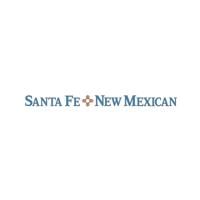A school of public health will transform New Mexico | My opinion
One of the most important lessons we should have learned from the coronavirus pandemic is that as a state we have allowed our public health infrastructure to shrink so badly that it has slowed our ability to respond. This must not happen again.
We have the opportunity to be better prepared. New Mexico will see an unprecedented revenue bonanza this fiscal year. Oil revenues and the economic recovery from the pandemic have produced a $1 billion reserve larger than currently budgeted spending. In addition, we still have $700 million in funds available for the Federal American Recovery Program.
Lawmakers are now proposing “transformative” uses of this unprecedented revenue, projects that not only add to what already exists, but could be real game changers; projects that future generations could look back on for the positive changes in our trajectory that they have produced.
One such idea is for a school of public health, jointly operated by the University of New Mexico and New Mexico State University. He received the enthusiastic support of UNM’s new Vice President of Health Sciences, Dr. Douglas Ziedonis, and the leadership of UNM and NMSU. Ziedonis helped found a school of public health at the University of California, San Diego, so he saw how powerful such a tool can be for focusing on preventing and eliminating threats to health – not just about the medical treatment of disease. it happens.
In the current state budget, we spend $9 billion on disease treatment, mostly through Medicaid. In contrast, public health spending (before COVID-19 brought huge amounts of money to the federal government) was under $100 million. Yet medical experts point out that 90% of the life expectancy gains we enjoy today come from public health initiatives such as vaccination programs; efforts to clean air and water; road safety laws; improved prenatal and infant care; environmental cleaning; and similar attacks on the social determinants of health.
We spend much more money on medical care. The improvements in surgical and pharmaceutical technology are impressive, but the gain in life expectancy from treating people once they get sick is only about 10%. This is not an argument for reducing medical care spending, but it does suggest that increased public health spending could have a much greater direct benefit to the population.
The formulation of health policies is currently blind to the lack of independent analysis of the results of medical care. We simply do not have the staff or the resources to analyze the data generated on expenditures, procedures, efficiency and unmet needs. The new school could take the lead in this area — and do so largely through federal and foundation research grants.
Many states have established “government resource centers” at a major state research university. Finding a way to use the results of academic research in the development of legislation and programming in state government would create the possibility of rational, data-driven policies, perhaps for the first time. in the domain of health.
Our new School of Public Health, involving interdisciplinary expertise from engineering, business, regional planning, communications, and virtually every other campus department, would become our New Mexico government resource center. Spending on this from this year’s surplus funds would be a win/win for the state for decades to come.
The senses. George Muñoz, Joe Cervantes, Martin Hickey and Jerry Ortiz y Pino serve in the New Mexico State Senate.


Comments are closed.